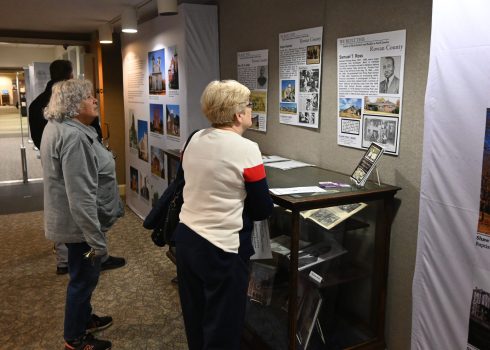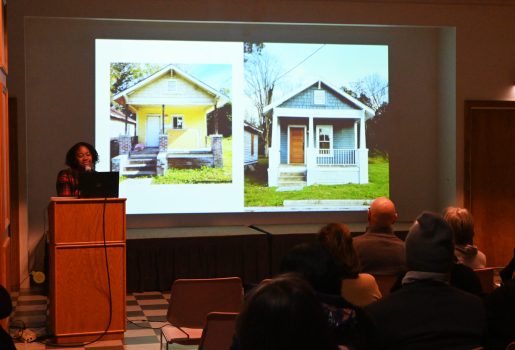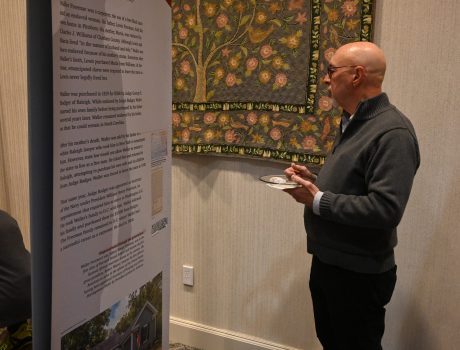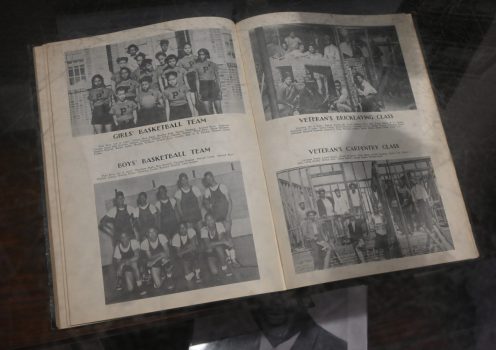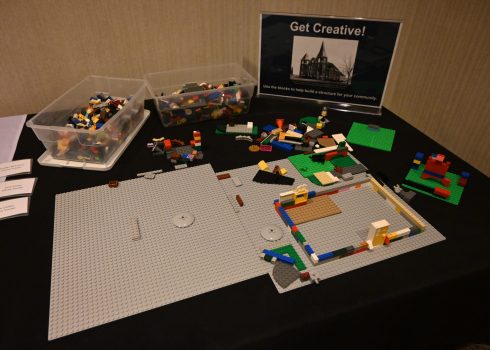“We Built This” exhibit shares the stories of those who made North Carolina what it is today
Published 12:00 am Saturday, December 2, 2023
SALISBURY — Today, people all over North Carolina work to preserve and champion the historic buildings that have lasted for as long as the country has been in existence. What may not be on everyone’s mind are the countless African Americans who were responsible for designing and constructing the many historical structures that remind North Carolinians of their long, complicated past.
Between now and Jan. 27, 2024, the Rowan Public Library Headquarters in Salisbury will be hosting the traveling exhibit “We Built This: Profiles of Black Architects and Builders in North Carolina,” presented by Preservation North Carolina, that sets out to honor those who “built the historic buildings we collectively treasure.”
On Nov. 30, a welcome reception for the exhibit was held at the RPL Headquarters where many residents and city officials were in attendance to learn more about how North Carolina came to be.
Monica T. Davis, is the founder and executive director of the Rebirthing Our Cultural Kingdom (R.O.C.K.) Foundation, whose mission is to save Black-built shotgun-style homes from being demolished. Having assisted in making the exhibit a reality, Davis kicked off the reception by giving a presentation on her foundation, gentrification, and her fight for affordable housing.
Davis wanted to represent as much of the state in the exhibit as possible and to get across that African American builders have a much greater impact on modern times than people realize.
“The whole exhibition is storytelling based on the life and history of that particular African American and their way of life and what they contributed back to their communities,” Davis said.
The library is even including an “all-ages scavenger hunt” for anyone to enter for a chance to win multiple prizes.
Walking through the exhibit, it’s easy for it to feel like a time machine. It identifies the slaves who traveled over to North Carolina during the Colonial times and how their labor built some of the first American buildings. The exhibit takes people to the Civil War, Reconstruction and the present day. It also highlights the positive impact Black churches and Historically Black Colleges and Universities had on certain segments of the population when it came to education and fellowship.
These buildings act as examples to show how much African Americans can accomplish when given the same opportunities as others.
The exhibit had additional biographies on a multitude of African American carpenters, builders, brickmasons, and architects whose influence branched outside of their professions.
“Not that they just built buildings, but they were also leaders, there were politicians, schoolteachers, principals, so we wanted to tell the whole story of the history and narrative of African Americans from the slave ship all the way to North Carolina and the built environment they contributed to everybody that was able to see the architecture,” Davis said.
Mayor Karen Alexander is proud to have the exhibit in Salisbury and believes it can act as a tipping point for people to better understand the historical context of North Carolina.
“This is so great for our young people to see all the different components and facets of building from the design concept to the people who actually make it happen,” Alexander said. “Even with all of the constraints that those individuals faced, they could do that kind of beautiful work. It’s pretty inspirational.”
When Jeffrey Sharp found out about the welcome reception and the exhibit, he felt like it was worth checking out for himself. After reading about all these people’s lives and the history of North Carolina, Sharp says he is now more capable of putting the present into the proper perspective.
“I’m really impressed at the depth of detail about some of the individuals who were involved in the project,” Sharp said. “I think every time that I learn more about the situation in the Antebellum South, it is more and more complicated in the way the legal system bent over backwards to try and accommodate slavery. There’s stories about people who were master builders who managed to practice a trade, some of them purchased their own freedom and then set about purchasing their own family members in some instances in order to bring them to freedom.”
After the “We Built This” exhibit leaves the RPL Headquarters, it will move to Livingstone College for the month of Feb.


